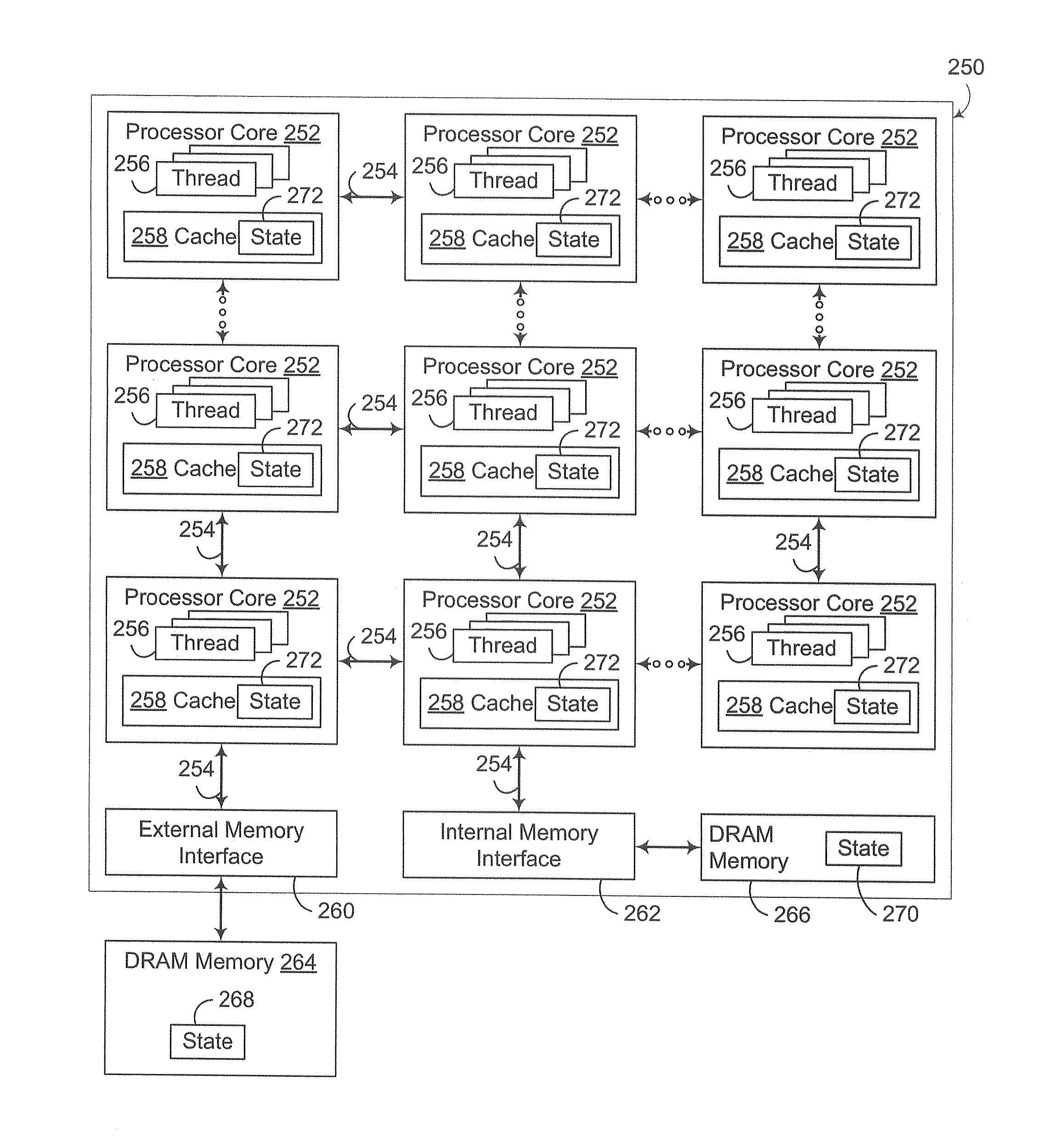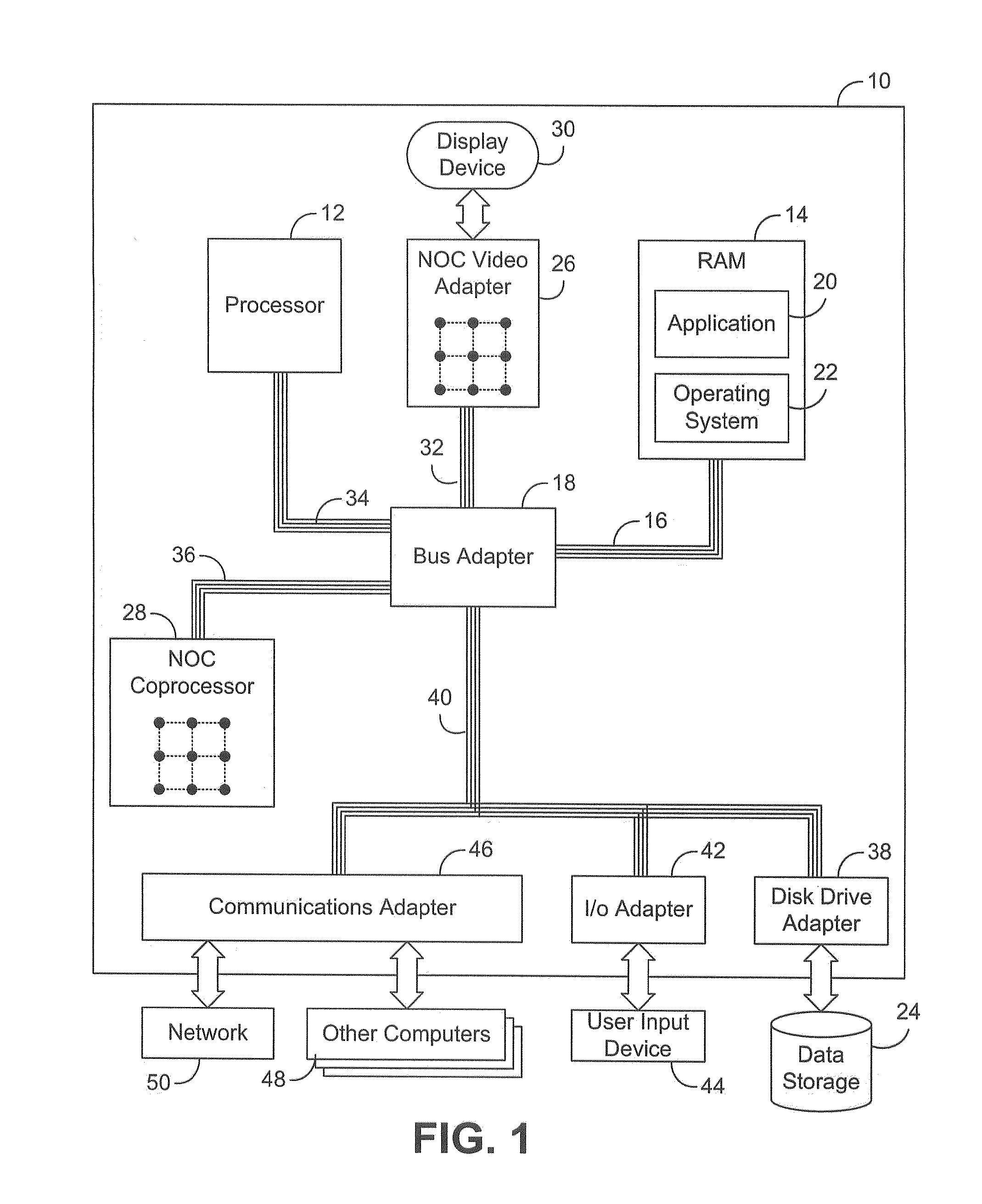Propagating shared state changes to multiple threads within a multithreaded processing environment
a multi-threaded processing environment and shared state technology, applied in the field of data processing, can solve the problems of increasing the computational requirements of image processing systems, the resolution and complexity of modern monitors, and the increase of image resolution and complexity, so as to reduce memory latency, communicate quickly and efficiently, and preserve memory bandwidth
- Summary
- Abstract
- Description
- Claims
- Application Information
AI Technical Summary
Benefits of technology
Problems solved by technology
Method used
Image
Examples
Embodiment Construction
[0026]Embodiments consistent with the invention improve the performance of a highly multithreaded environment by updating a shared state in a highly multithreaded environment by propagating or streaming changes to the shared state to multiple parallel hardware threads of execution in the multithreaded environment using an on-chip communications network and without attempting to access any copy of the shared state data in a shared memory to which the parallel threads of execution are also coupled.
[0027]A highly multithreaded environment, in this context, refers to a hardware environment in which a relatively large number of parallel threads of execution, e.g., eight or more threads, disposed on the same integrated circuit device, or chip, are interconnected with one another via an on-chip communications network. A parallel thread of execution is a thread within the context of hardware-based multithreading, as opposed to software-based (time slice) multithreading, although it will be ...
PUM
 Login to View More
Login to View More Abstract
Description
Claims
Application Information
 Login to View More
Login to View More - R&D
- Intellectual Property
- Life Sciences
- Materials
- Tech Scout
- Unparalleled Data Quality
- Higher Quality Content
- 60% Fewer Hallucinations
Browse by: Latest US Patents, China's latest patents, Technical Efficacy Thesaurus, Application Domain, Technology Topic, Popular Technical Reports.
© 2025 PatSnap. All rights reserved.Legal|Privacy policy|Modern Slavery Act Transparency Statement|Sitemap|About US| Contact US: help@patsnap.com



